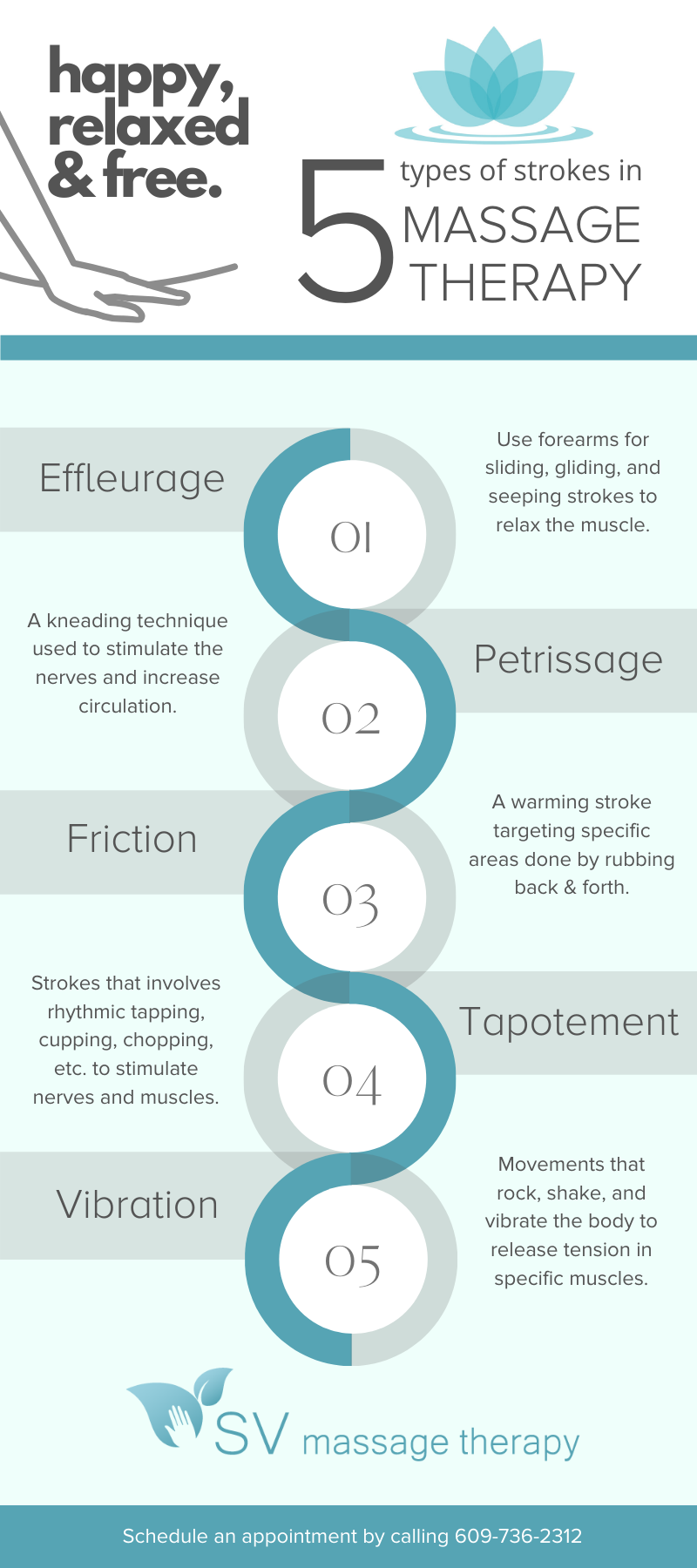At SV Massage Therapy, we don’t just provide Swedish massages near Cherry Hill, NJ — we also offer helpful information about the measurable benefits of massage therapy. It’s easy to get a massage and walk away thinking “that felt nice,” but don’t you want to know why you leave your appointment feeling so relaxed? Let’s take a closer look at the three basic massage techniques, their effects on the body, and the benefits they provide to help you relax.
3 Basic Massage Techniques & How They Work
The Swedish massage uses five basic stroking movements together from light to deep pressure, depending on the needs of the client. Take a look at the infographic below to learn about these five basic massage therapy techniques, then continue reading as we describe them in more detail:

Stroking Movements
Also commonly referred to as “effleurage” by massage therapists, stroking movements are the most basic form of massage therapy and are typically used at the beginning of a massage to induce relaxation. Stroking movements are slow, smooth, and applied with even pressure from both hands, conforming to the contours of the patient’s body. The benefits of effleurage include muscle relaxation, nerve stimulation, and stimulation of blood flow.
Compression Movements
Compression movements can also be referred to as “petrissage” techniques, which are technically an entire category of massage movements. Kneading, wringing, lifting, and rolling are all classified as “petrissage” techniques or compression movements. These techniques can stimulate the skin’s vascular, lymphatic, and cellular functions, while also providing benefits in regards to muscle tone and the breakdown of adipose tissue.
Percussion Movements
Also known as “tapotement,” percussion movements are another broad category that is made up of several individual massage techniques. Cupping, hacking, plucking, pounding, pummelling, and tapping are all techniques that fall into the percussion or tapotement classification. These movements are used to stimulate nerve endings and can have a hyperemic effect, meaning they increase local blood circulation and, ultimately, warm underlying tissue in the area.
Contact SV Massage Therapy Today to Learn More
Want to learn more about the science behind basic massaging methods? Give us a call with any questions you have, and we’ll gladly provide additional details. If you would like to get a Swedish massage near Marlton, NJ, call us today to schedule an appointment with our experienced massage therapist!
